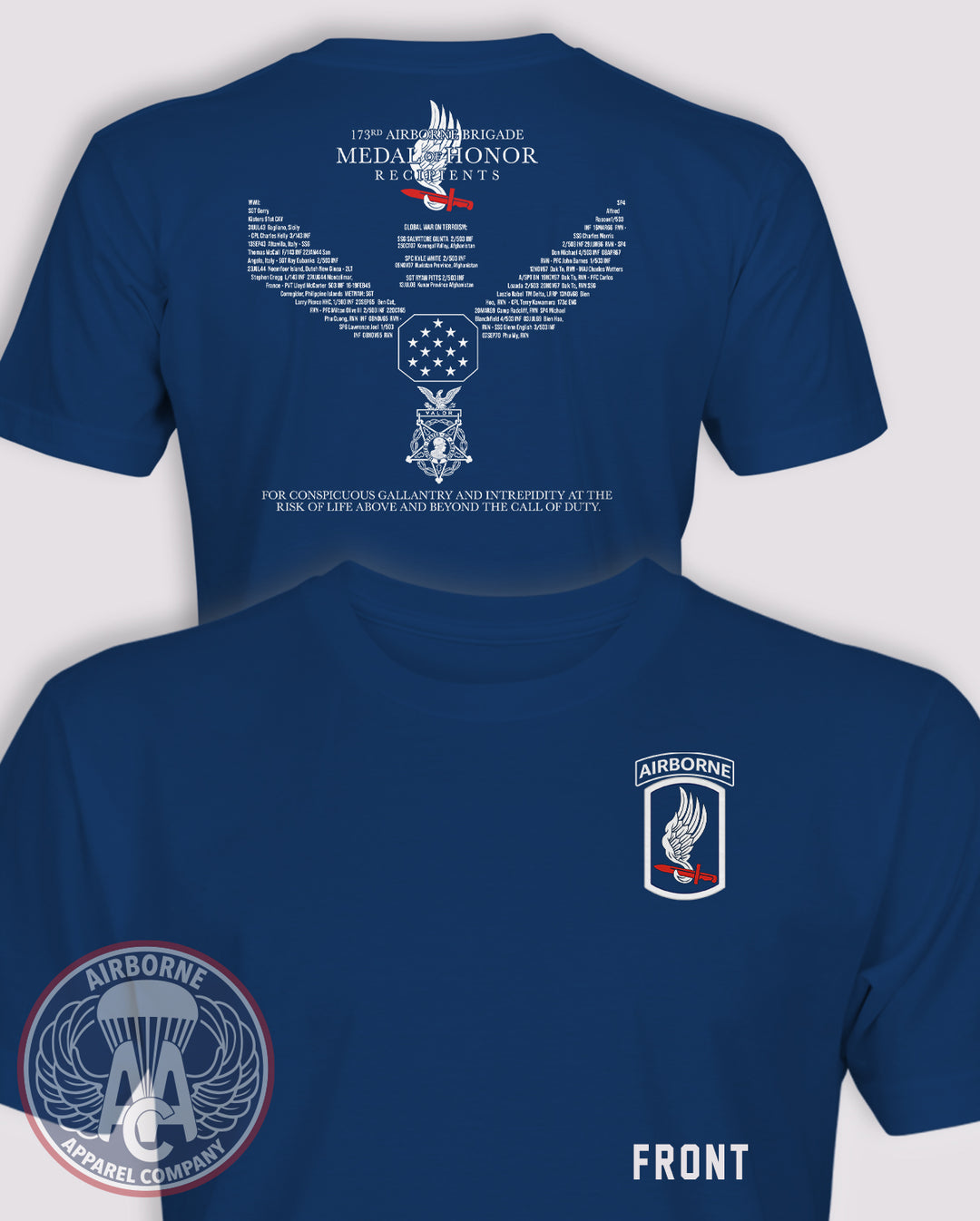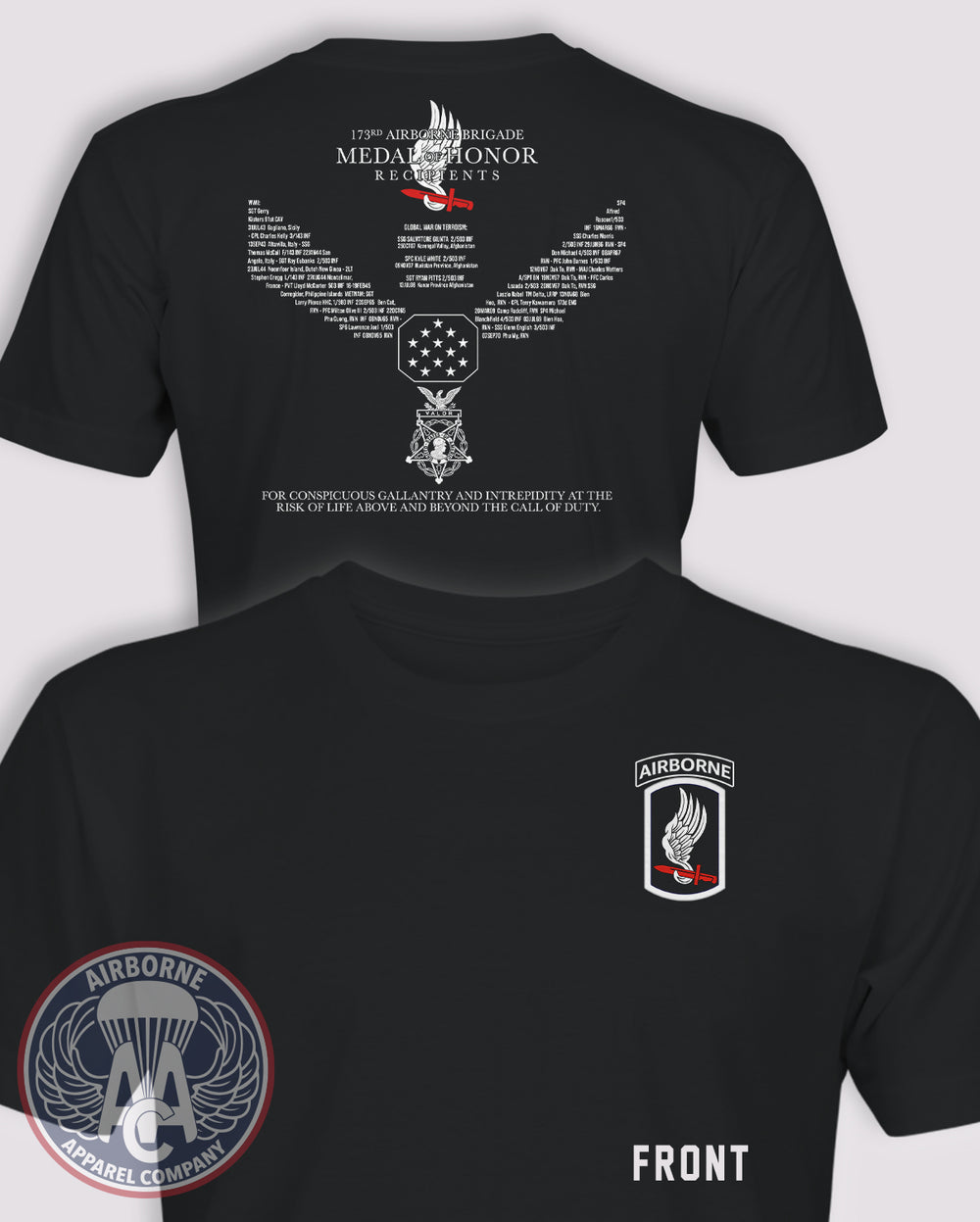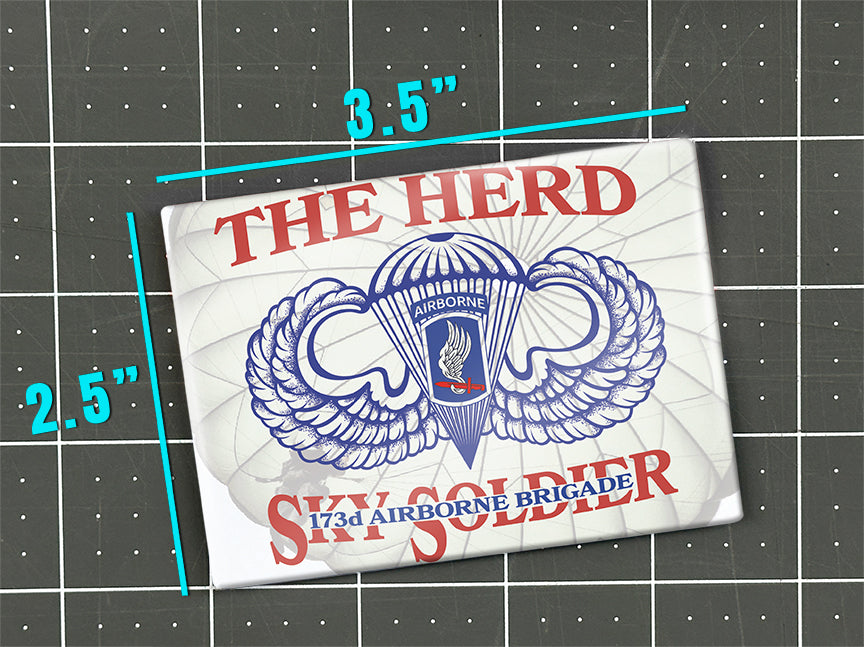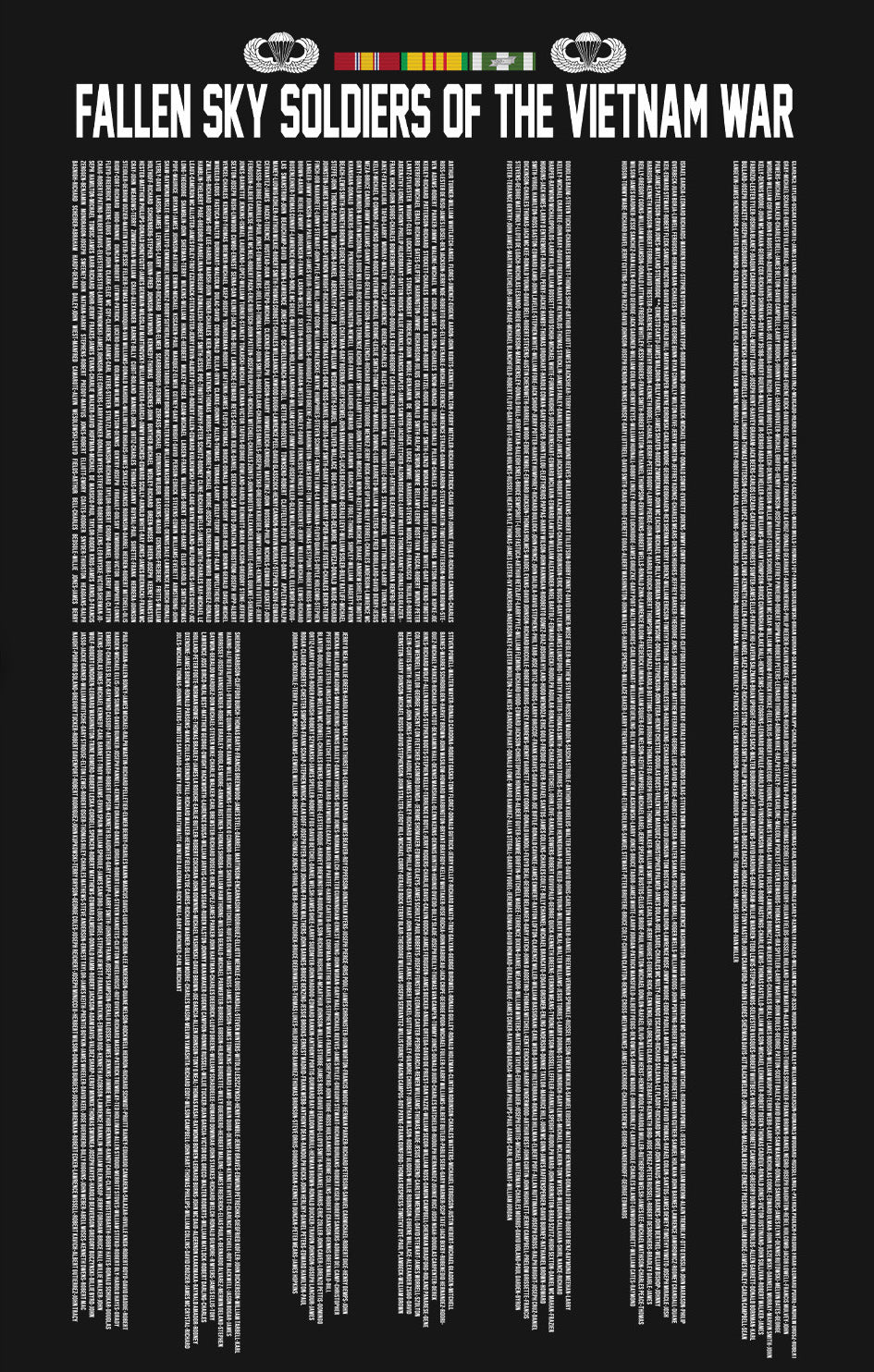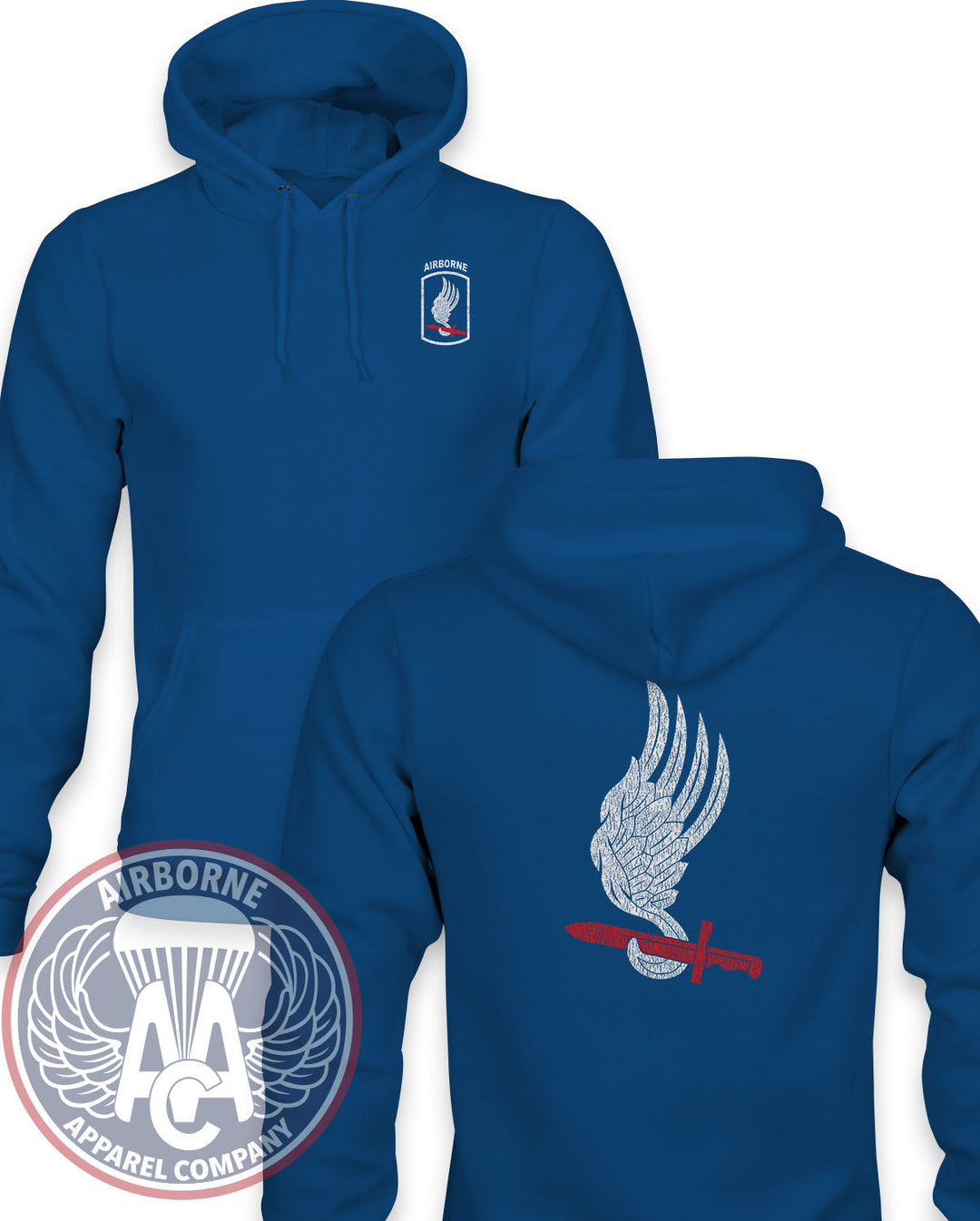The 173rd Airborne Brigade, known as "The Herd" and “Sky Soldiers,” is one of the U.S. Army’s most celebrated airborne units. Activated in 1915 and reborn in the Cold War, the brigade earned fame with the first major U.S. combat jump of the Vietnam War, fought in Iraq and Afghanistan, and continues its mission today as the Army’s forward-deployed airborne force in Europe. Airborne Apparel Company is proud to offer reproductions and unique designs that celebrate the legacy of the 173rd Airborne Brigade.
The unit traces its lineage to the 173rd Infantry Brigade, organized in 1915. After periods of inactivation, it was reactivated during the Cold War as the 173rd Airborne Brigade in 1963 at Okinawa, part of the Army’s strategy to maintain flexible, forward-deployed forces in Asia. The nickname “Sky Soldiers” was given by Vietnamese allies and has remained ever since.
Vietnam War
The 173rd Airborne Brigade was the first major U.S. Army ground combat unit committed to Vietnam, deploying in May 1965. Its paratroopers made the first combat parachute jump of the war during Operation Junction City in February 1967, landing in Tây Ninh Province.
The brigade fought in some of the conflict’s most intense battles, including Bien Hoa, Dak To, and widespread counterinsurgency operations. At Hill 875 during the Dak To campaign, the brigade suffered heavy losses but displayed extraordinary valor. For its service in Vietnam, the 173rd earned 14 campaign streamers and four Presidential Unit Citations.
Cold War and Europe
After Vietnam, the brigade was inactivated, but in 2000 the 173rd Airborne Brigade (Separate) was reactivated in Vicenza, Italy, as the Army’s only forward-deployed airborne brigade in Europe. Its presence symbolized America’s rapid-response commitment to NATO and regional crises.
Global War on Terror
The 173rd became one of the Army’s most deployed brigades after 2001.
-
Iraq (2003): The brigade led the first large-scale airborne assault of the war, jumping into northern Iraq to secure airfields and block Iraqi forces.
-
Afghanistan: The 173rd conducted multiple combat tours, fighting in rugged terrain and engaging in counterinsurgency operations. Elements of the brigade earned honors for valor in the Korengal Valley and other difficult campaigns.
-
Recent deployments: The 173rd continues to deploy rotational forces to Eastern Europe, reinforcing NATO allies in response to modern security threats.
Structure and Identity
The 173rd includes multiple airborne infantry battalions, cavalry, artillery, engineer, and support units. Its paratroopers train regularly with NATO allies, conducting airborne and air assault exercises across Europe.
-
Nickname: “Sky Soldiers”
-
Motto: “Sky Soldiers” (also widely used as their identity)
-
Insignia: Distinctive winged bayonette patch, symbolizing airborne strike capability.
-
Key Campaigns: Vietnam (Bien Hoa, Dak To, Hill 875, Junction City), Iraq (2003 airborne assault), Afghanistan (multiple tours).
-
Decorations: Presidential Unit Citations, Valorous Unit Awards, Meritorious Unit Commendations, and foreign awards from allies.
Enduring Significance
The 173rd Airborne Brigade remains the U.S. Army’s only forward-stationed airborne infantry brigade in Europe, able to deploy anywhere within hours. From its combat jumps in Vietnam and Iraq to its modern NATO mission, the brigade’s paratroopers have lived up to their name—Sky Soldiers—standing ready to fight anytime, anywhere.
Airborne Apparel Company is proud to offer reproductions and unique designs that celebrate the legacy of the 173rd Airborne Brigade.















